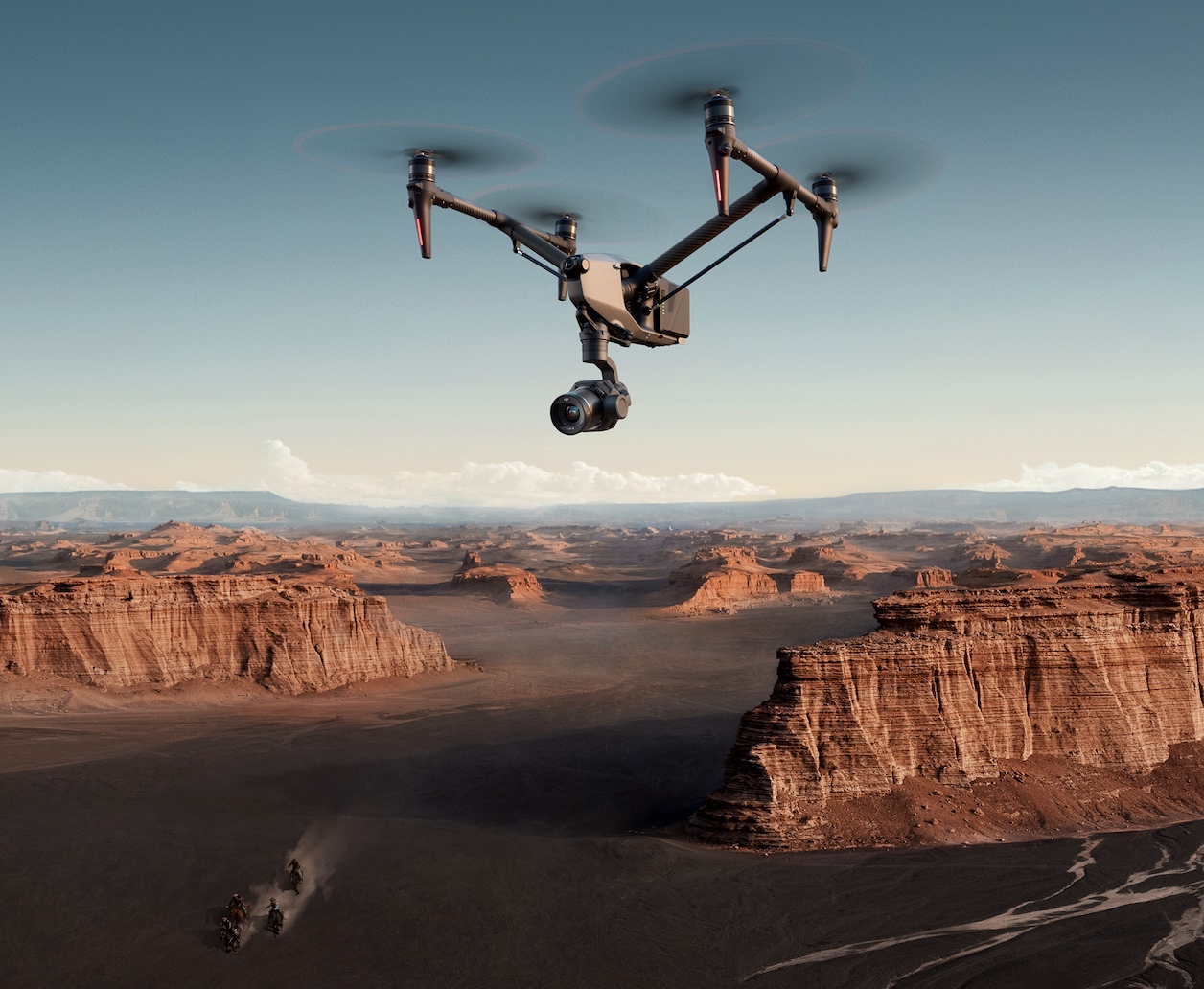The DJI Inspire 3 is the Inspire update many have been waiting for DJI to announce for a long time. The Inspire 2 started to be available in 2016. For any update to take this long, it better be worth it, and I think DJI has made the Inspire 3 well worth the wait.
You have the DJI Mavic 3 and heavy-lift drones capable of carrying many cameras. The DJI Inspire 3 is meant to fit between those two markets. I usually am a DJI Mavic Pro 3 segment, but I consider myself a pretty darn good pilot, and the DJI Inspire 3 offers up a whole lot of drool-worth features that look well worth the extra cost.
DJI says the Inspire 3 is the only “Cinema-grade” drone supporting RTK-powered waypoint pro and omnidirectional sensing. I put cinema grade in quotes because the user makes the image look cinematic, not the gear. Yes, the Inspire 3 can record raw, but raw doesn’t usually make your image look better.
There are three big key features I find myself leaning toward that make the DJI Inspire 3 special, centimeter-accurate repeatable moves, the inclusion of an FPV camera on the front to give the operator situational awareness, and the Inspire 3’s ability to change lenses. Changing the lenses will be the biggest advantage over the Mavic 3. I mean, who doesn’t love the look of a long lens on a drone as it pivots around a subject? It’ll be the closest we get to Tony Scott’s “Spy Game,” and its wonderful helicopter shots.
For the camera, DJI is using the Zenmuse X9 full-frame camera, which they’re calling the X9-8K Air. This, to me, means it’s similar to the camera found on the DJI Ronin 4D but lighter. When I reviewed the DJI Ronin 4D, I found the camera pretty good, and once someone gets used to its uniqueness, they’ll be able to capture some incredible footage.
DJI’s image processing system, called CineCore 3.0, supports internal CinemaDNG recording up to 8K/25fps and 8K/75fps in ProRes RAW. In S&Q, the Inspire 3 supports full-frame 4K /120fps ProRes RAW.
The X9-8K Air has a dual native ISO of 800/4000 when recording full frame up to 29.97. In a bit of new tech to me, the Inspire 3 dual native ISO changes to 320/1600 when shooting full-frame at frame rates above 29.97. The X9-8K Air claims a dynamic range of 14+ stops.
The X9-8K Air loses the internal ND found in the Ronin 4D, which is a shame because I think having an internal ND would be pretty necessary for the Inspire 3. But, there must be a reason, and someone smarter than I had to figure it out.
You can capture full-frame on the DL 18mm F2.8 ASPH, DL 24mm F2.8 LS ASPH, DL 35mm F2.8 LS ASPH, and the DL 50mm f2.8 LS ASPH lenses. You cannot change the lens mount or use other lenses on the Inspire 3.
The FPV camera, positioned on top and front of the drone’s body, offers an all-new 161-degree field of view with a 1/1.8-inch night vision sensor. The 1080p/60fps live feed will ensure a clear view to give pilots situational awareness for added flight safety.
Inspire 3 integrates high-precision RTK positioning technology used in industries such as architecture and surveying to deliver centimeter-level accuracy. [Compared with traditional meter-level positioning supported by Global Navigation Satellite Systems (GNSS), RTK makes flying more stable and makes flight-route planning more accurate, significantly improving creative efficiency.
RTK antennas have been built into the airframe with a new stacked ceramic design, which enables three types of GNSS (GPS, BeiDou, and Galileo) and delivers dual-frequency positioning down to the centimeter level. By activating an RTK network or setting up a D-RTK 2 Mobile Station, users can achieve highly accurate positioning without mounting any additional modules.
Both the front and the rear of Inspire 3 have a built-in stacked ceramic antenna, providing powerful anti-magnetic-interference capability to further improve flight accuracy and safety.
Waypoint Pro is specially designed for aerial cinematography, and enables flight-route and shot planning with a wide range of customized settings. With the new Repeatable Routes and 3D Dolly modes, an innovative automated shooting experience can be easily achieved. In addition, RTK centimeter-level positioning ensures more accurate flight-route planning and execution. Whether solo shooting or in a professional crew, use Waypoint Pro to master even highly-complex scenes.
3D Dolly can simulate a crane, cablecam, or dolly on film sets while going far beyond the limitations of those devices. After planning a flight route, the cinematographer can manually control the aircraft to move along the route back and forth while adjusting parameters such as speed, gimbal angle, and more according to the needs of the shot. This makes complicated cinema-grade camera movements easier and more efficient and can deliver improved visual effects.
Using Repeatable Routes, the aircraft will automatically fly on the same route and maintain all preset parameters such as altitude, speed, gimbal angle, and camera settings. Repeating the same flight mission allows cinematographers to effortlessly perform difficult one-takes, or to fly at different times in the same place to easily create long-duration timelapses that capture transitions such as day to night or season to season.
The DJI Inspire 3 is priced at $16,499 USD. This is not your prosumer drone. This is straight-up professional in features and price.



